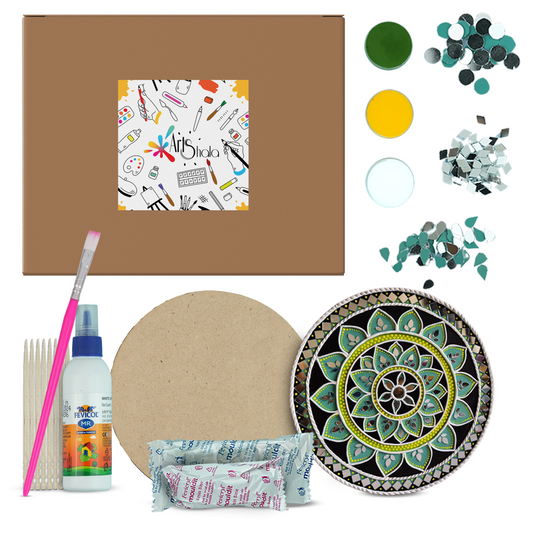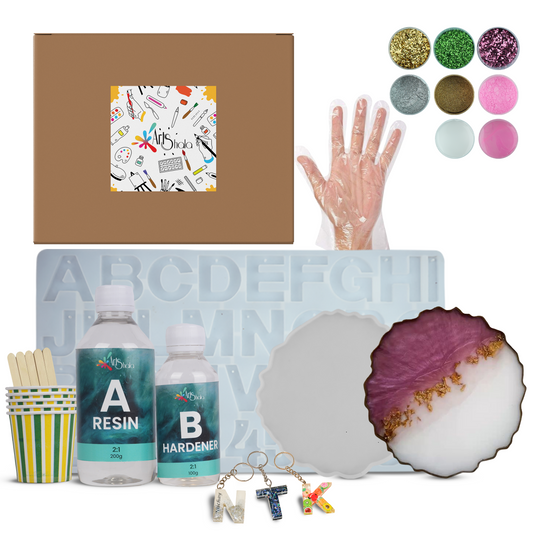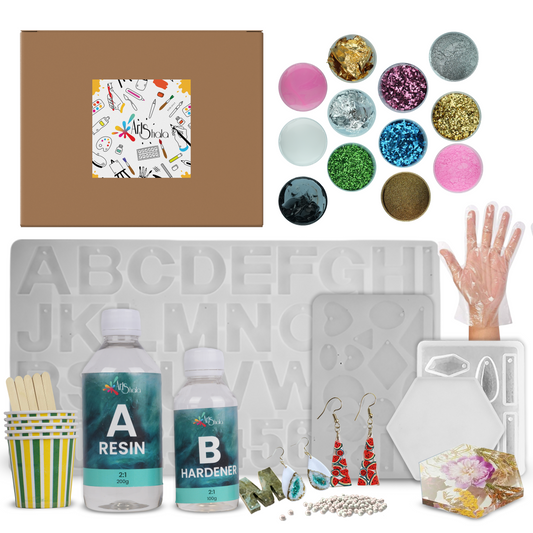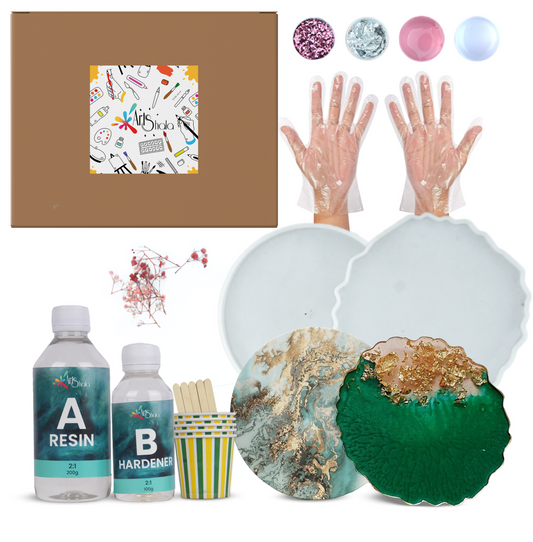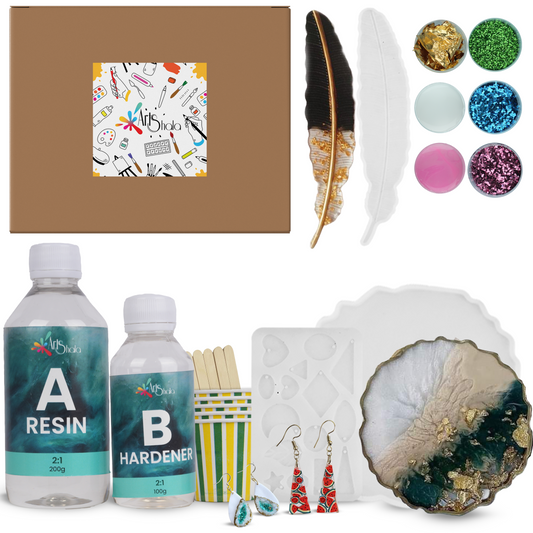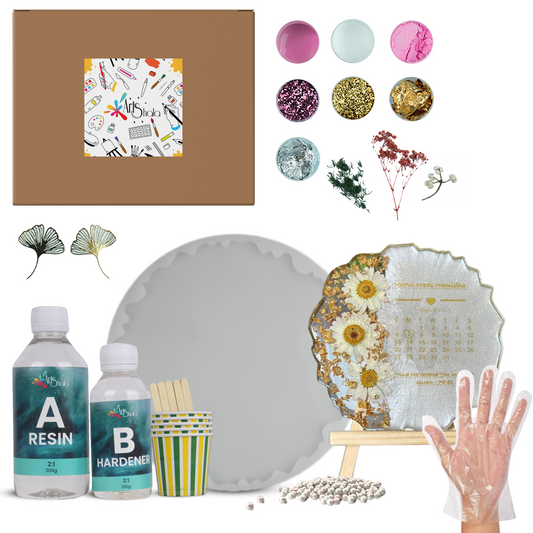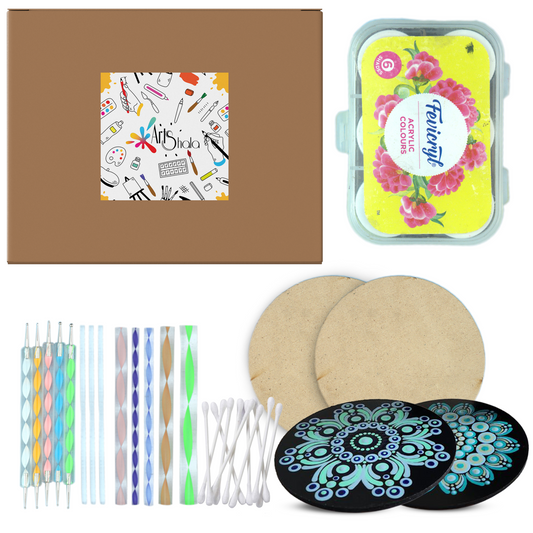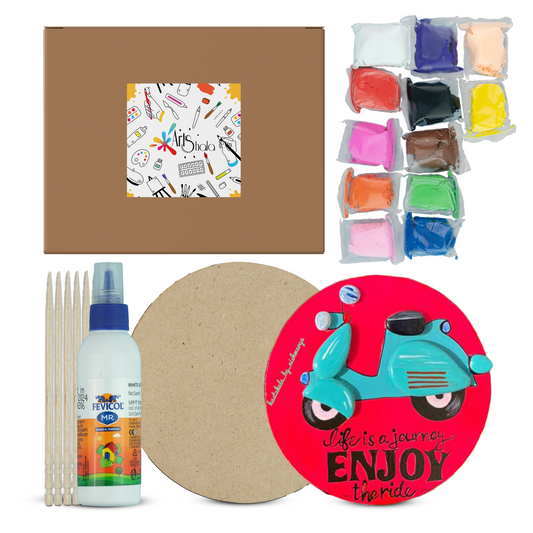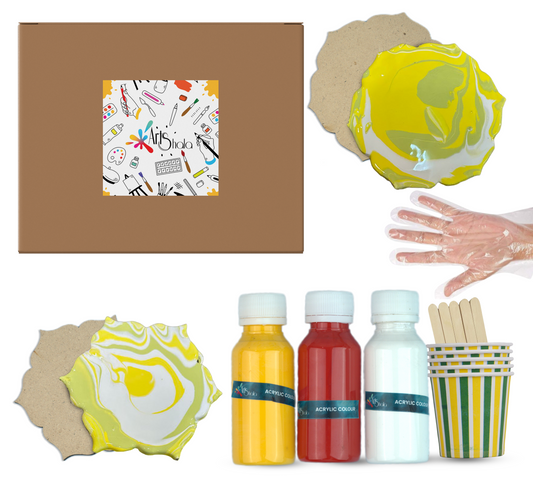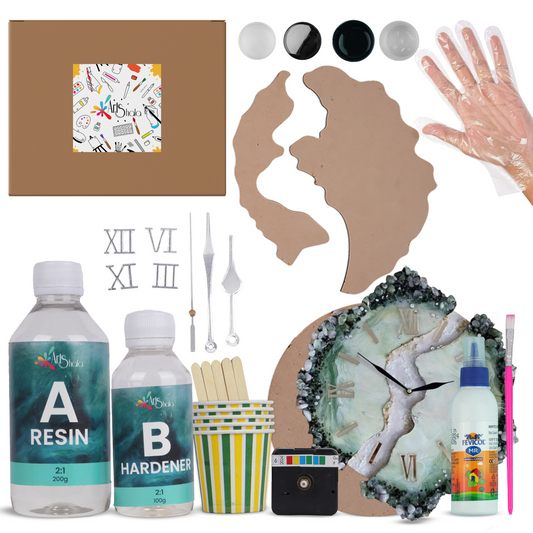How to Remove Acrylic Paint from Reused Canvas?
Acrylic paint is a versatile medium favoured by many artists for its quick-drying properties and vibrant colours. However, mistakes happen; sometimes, you may need to remove acrylic paint from a canvas to reuse it. This guide will provide comprehensive methods and tips to effectively remove acrylic paint from a reused canvas, ensuring that you can reclaim your canvas for future artistic endeavours. To learn more about such techniques, enrol in an acrylic painting workshop.
Understanding Acrylic Paint
It consists of tints suspended in an acrylic polymer emulsion, making it water-soluble but water-resistant when wet. This characteristic can make it challenging to remove once it has dried. However, with the proper procedures and materials, you can successfully strip the paint and prepare the canvas for a new masterpiece.
Safety Precautions
Before diving into the removal process, it's essential to take safety precautions:
-
Ventilation: Make sure that you are working in a well-ventilated area to bypass inhaling fumes from solvents.
-
Protective Gear: Remember to wear disposable gloves to shield your skin from irritation and to keep your hands clean.
-
Flammability: Some solvents, like isopropyl alcohol, are flammable. Keep them away from open flames and heat sources.
Materials Needed
To remove acrylic paint from a canvas, gather the following materials:
-
Isopropyl alcohol (at least 60% concentration)
-
Spray bottle or container (large enough for the canvas)
-
Putty knife or palette knife
-
Soft cloths or paper towels
-
Dish soap (for cleaning)
-
Warm water
-
Optional: Turpentine or ammonia as alternative solvents
Methods of Removing Acrylic Paint from Reused Canvas
Method 1: Using Isopropyl Alcohol
One of the most effective methods for removing dried acrylic paint is using isopropyl alcohol. Here’s how to do it:
-
Prepare the Canvas: Place the canvas on a flat, hard surface. If the canvas is large, you might need to work in sections.
-
Apply Isopropyl Alcohol: Pour isopropyl alcohol into a spray bottle or a container. If you are using a spray bottle, lightly mist the surface of the canvas. If using a container, soak a cloth in the alcohol and apply it to the painted areas.
-
Let It Soak: Let the alcohol sit on the paint for 5-10 minutes. This will help break down the acrylic polymer.
-
Scrape Off the Paint: Use a putty or palette knife to gently scrape the softened paint off the canvas. Be careful not to apply too much pressure, as this could damage the canvas.
-
Wipe Clean: Use a smooth cloth or paper towel to remove any remaining paint residue after scraping.
-
Wash the Canvas: Mix a few drops of dish soap with warm water and use this solution to clean the canvas thoroughly. Wipe it with a clean fabric to remove any leftover alcohol or paint.
-
Dry the Canvas: Allow the canvas to dry completely before applying new paint.
Method 2: Soaking in Rubbing Alcohol
For larger areas or stubborn paint, soaking the canvas may be more effective:
-
Prepare the Soaking Solution: Fill a container with enough isopropyl alcohol to submerge the painted side of the canvas.
-
Soak the Canvas: Place the canvas in the container with the painted side facing down. Let it soak for at least 1 hour.
-
Check the Paint: After soaking, check to see if the paint has softened. If it has, use a putty knife to gently scrape it off.
-
Repeat if Necessary: If some paint remains, you can soak the canvas for an additional hour and repeat the scraping process.
-
Clean and Dry: Follow the same cleaning and drying steps as outlined in Method 1.
Method 3: Alternative Solvents
If isopropyl alcohol is unavailable, consider using other solvents, such as turpentine or ammonia. The steps are similar:
-
Apply the Solvent: Apply a cloth soaked in turpentine or ammonia to the painted areas.
-
Let It Sit: Allow the solvent to penetrate the paint for several minutes.
-
Scrape and Wipe: Follow previously described scraping and wiping procedures.
Additional Tips for Successful Paint Removal
-
Test First: Always test your chosen solvent on a small, inconspicuous canvas area to ensure it does not damage the fabric.
-
Work in Sections: If the canvas is large, work in smaller sections to manage the process more effectively.
-
Be Patient: Removing paint can take time, especially if multiple layers are present. Patience is key to avoiding damage.
-
Consider Repriming: After removing the paint, you may apply a layer of gesso. It will prime the canvas for new artwork.
Caring for Your Reused Canvas
Once you've successfully removed the acrylic paint and prepared your canvas for reuse, it’s important to care for it appropriately to extend its lifespan and maintain its quality. Here are some tips to ensure your canvas remains in excellent condition for future projects:
Storage
Keep your canvas in a cool, dry place, away from immediate sunlight. Excessive heat and humidity can warp the canvas or lead to mould growth. If you have multiple canvases, stack them flat or hang them to avoid creasing and damage.
Priming
Before applying new paint, consider priming the canvas with a layer of gesso. Gesso creates a smooth surface that enhances paint adhesion and vibrancy. It also helps prevent the paint from soaking into the canvas fibres, which can lead to dull colours and uneven textures.
Cleaning Your Tools
After each painting session, thoroughly clean your brushes, palette knives, and other tools to prevent acrylic paint from drying. Use warm, soapy water for brushes and palettes, and secure they are completely dry before storing them.
Regular Maintenance
If your canvas becomes dusty or dirty, gently wipe it with a soft, dry cloth. Avoid using water or solvents on the canvas surface unless you prepare it for paint removal or cleaning a specific area.
Documenting Your Work
Record your artistic process by photographing your paintings at various stages. This documentation can provide insights into your growth as an artist and serve as a portfolio for future opportunities.
Conclusion
Reusing a canvas by removing acrylic paint is cost-effective and environmentally friendly. You can successfully reclaim and prepare your canvas for your next creative project with the proper techniques and precautions. Whether you use isopropyl alcohol, soak the canvas, or try alternative solvents, following these steps will help ensure a smooth and effective paint removal.
By understanding the properties of acrylic paint and employing these methods, you can confidently tackle any painting mishap and continue your artistic journey. Contact Us to learn more about this art form or visit Arts Shala’s website.



